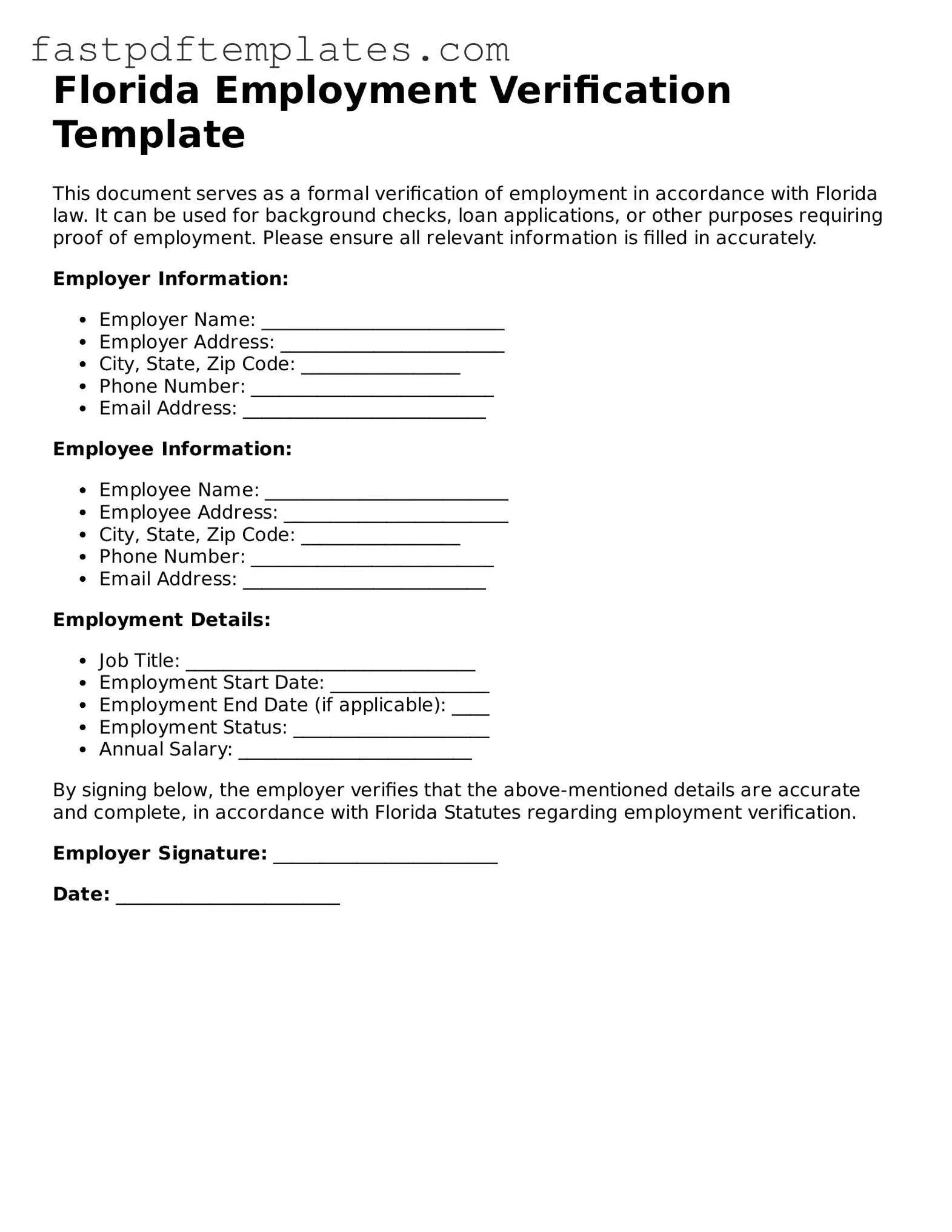The I-9 form is used by employers in the United States to verify the identity and employment authorization of individuals hired for employment. Like the Florida Employment Verification form, the I-9 requires employees to provide specific identification documents. Both forms aim to ensure compliance with federal regulations regarding employment eligibility, making them essential for employers to complete at the start of employment.
The W-4 form is another important document that employees fill out when starting a job. It helps employers determine the correct amount of federal income tax to withhold from an employee's paycheck. Similar to the Florida Employment Verification form, the W-4 collects personal information, such as the employee's name and address, and requires the employee's signature, affirming the accuracy of the provided information.
The Employment Application is a document that candidates fill out to apply for a job. It collects information about the applicant's work history, education, and skills. Like the Florida Employment Verification form, the Employment Application serves as a way for employers to gather essential information about potential hires. Both documents are critical in the hiring process, helping employers make informed decisions.
The Offer Letter is a formal document that outlines the terms of employment for a new hire. It includes details such as job title, salary, and benefits. Similar to the Florida Employment Verification form, the Offer Letter requires the employee's acknowledgment and acceptance of the terms. Both documents play a role in establishing a clear understanding between the employer and the employee before the start of employment.
The Background Check Authorization form allows employers to conduct a background check on potential employees. This document is similar to the Florida Employment Verification form in that it requires the employee's consent to verify information. Both forms help employers ensure they are making safe hiring decisions and complying with legal requirements regarding employee qualifications.
The Social Security Administration (SSA) form is used to verify an employee's Social Security number. This form is crucial for tax reporting and is similar to the Florida Employment Verification form in that it confirms the employee's identity. Both documents help employers fulfill their legal obligations and ensure accurate payroll processing.
The Direct Deposit Authorization form allows employees to set up direct deposit for their paychecks. This form, like the Florida Employment Verification form, requires the employee's personal information and signature. Both documents are essential for establishing a reliable payment method, ensuring that employees receive their wages on time and securely.
The Non-Disclosure Agreement (NDA) is a document that protects confidential information shared between an employer and employee. While it serves a different purpose than the Florida Employment Verification form, both require the employee's signature and affirmation of understanding. Both documents help establish trust and clarify expectations regarding sensitive information in the workplace.
The Employee Handbook acknowledgment form is a document that employees sign to confirm they have received and understood the company’s policies and procedures. Like the Florida Employment Verification form, it requires the employee's signature and plays a vital role in setting the groundwork for the employment relationship. Both forms help ensure that employees are aware of their rights and responsibilities within the company.
